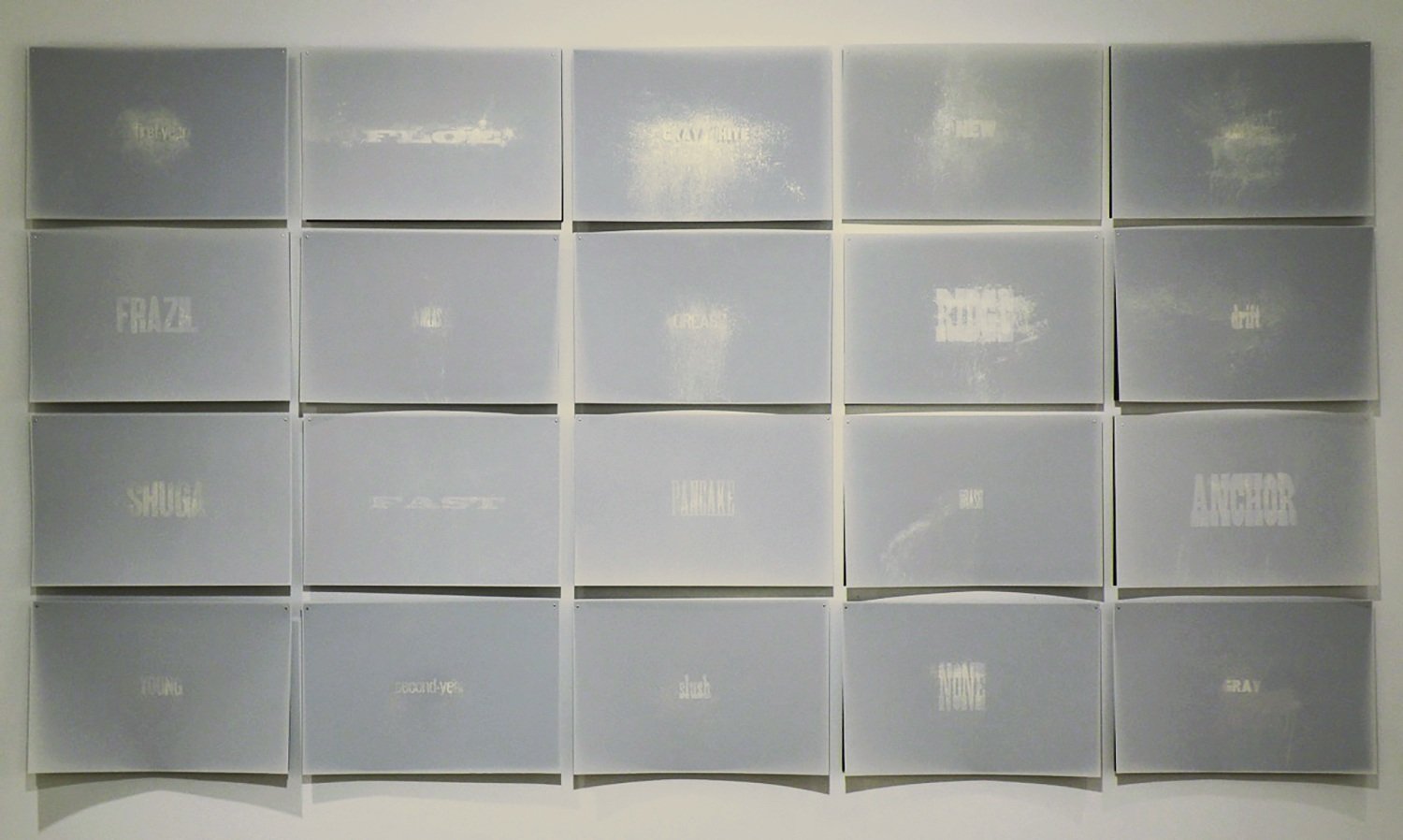
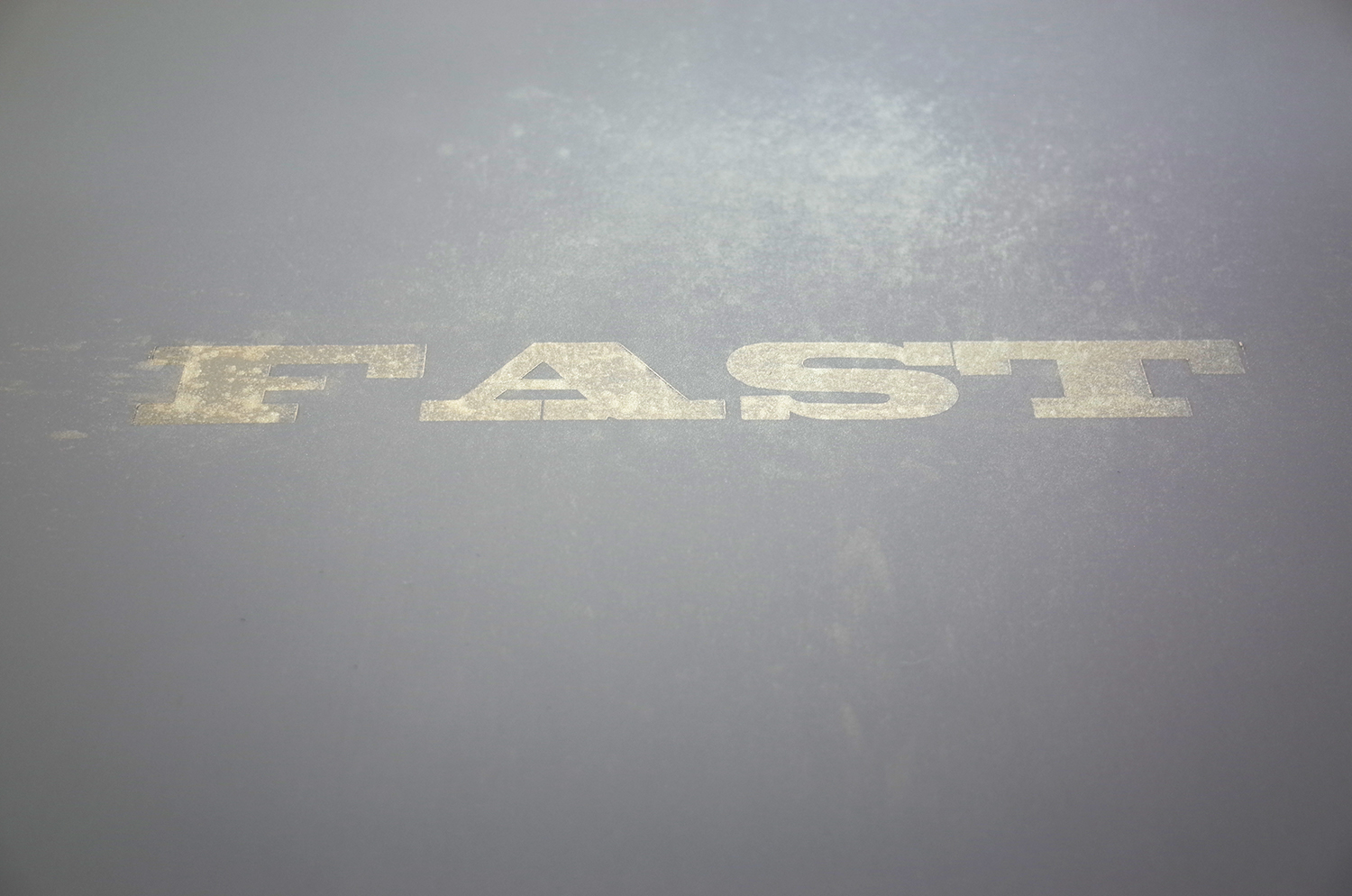
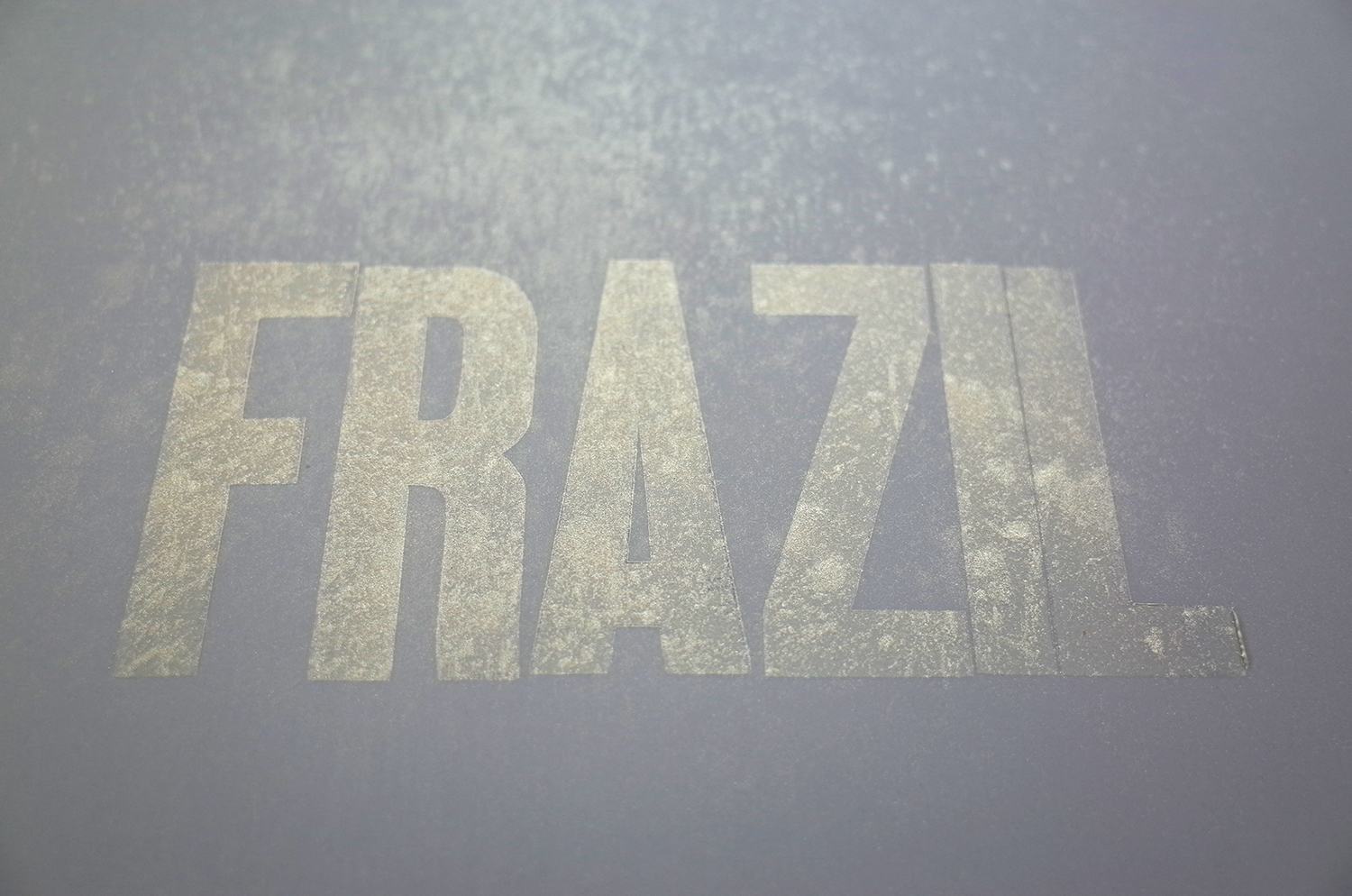

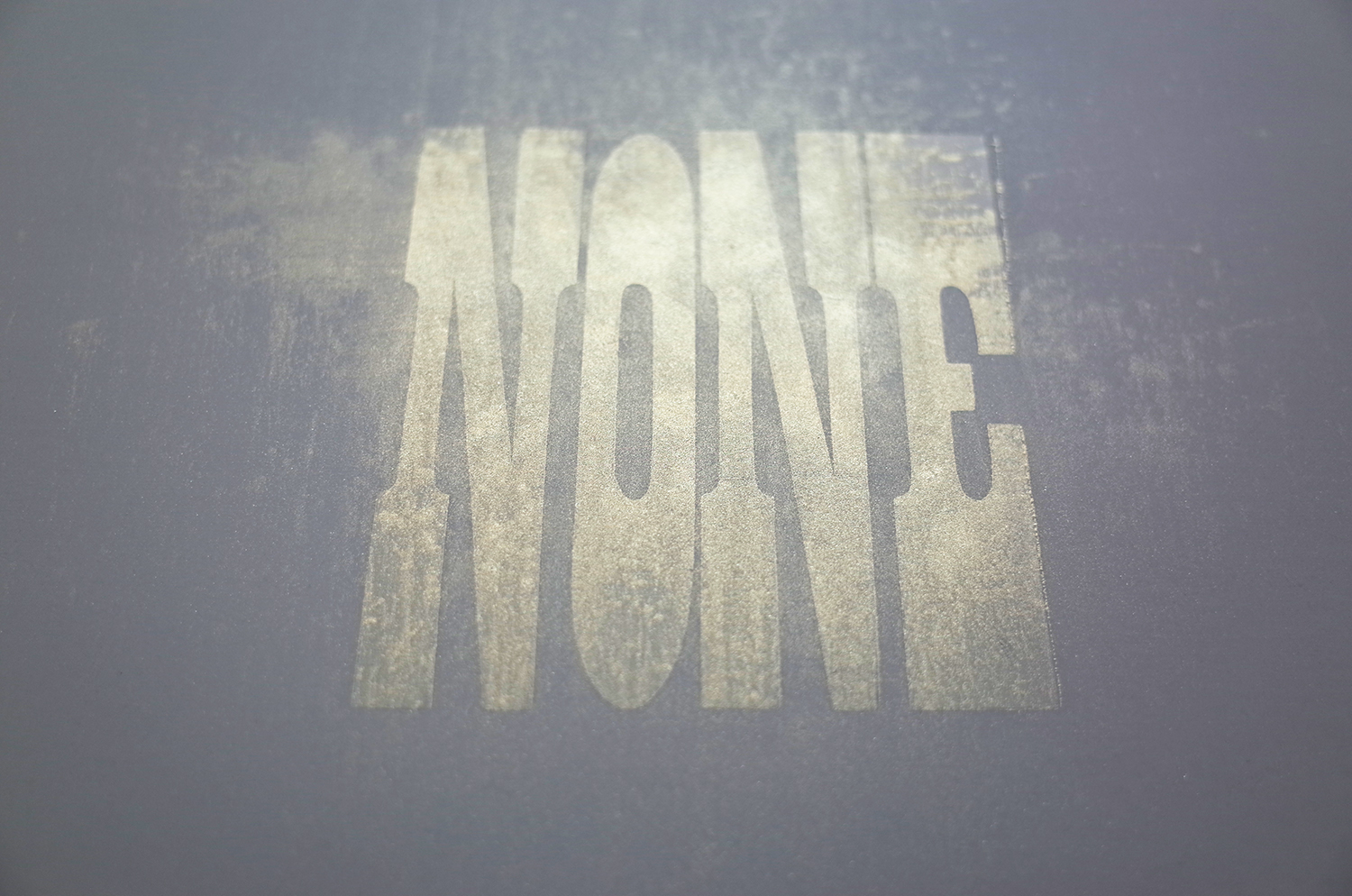
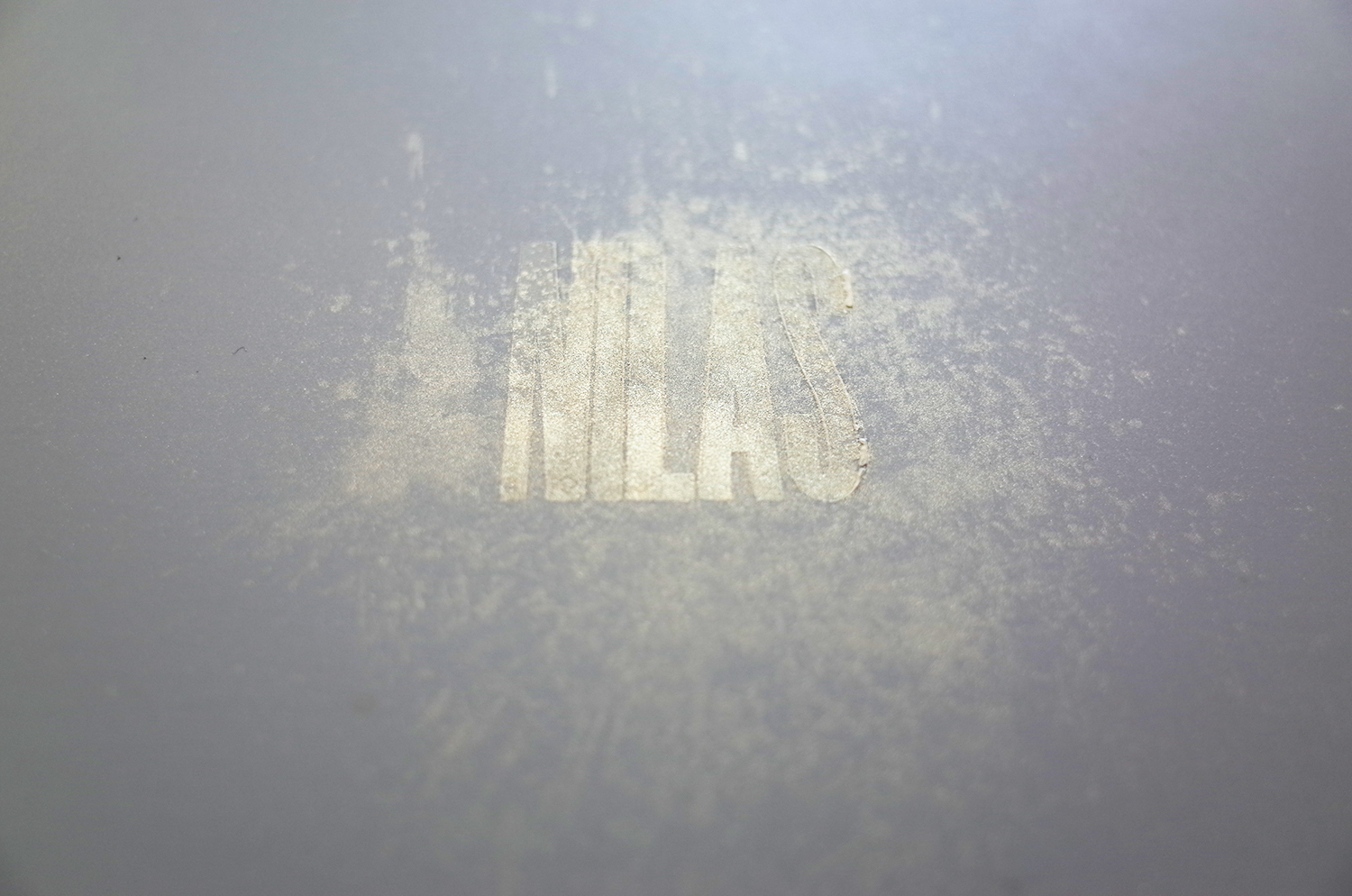


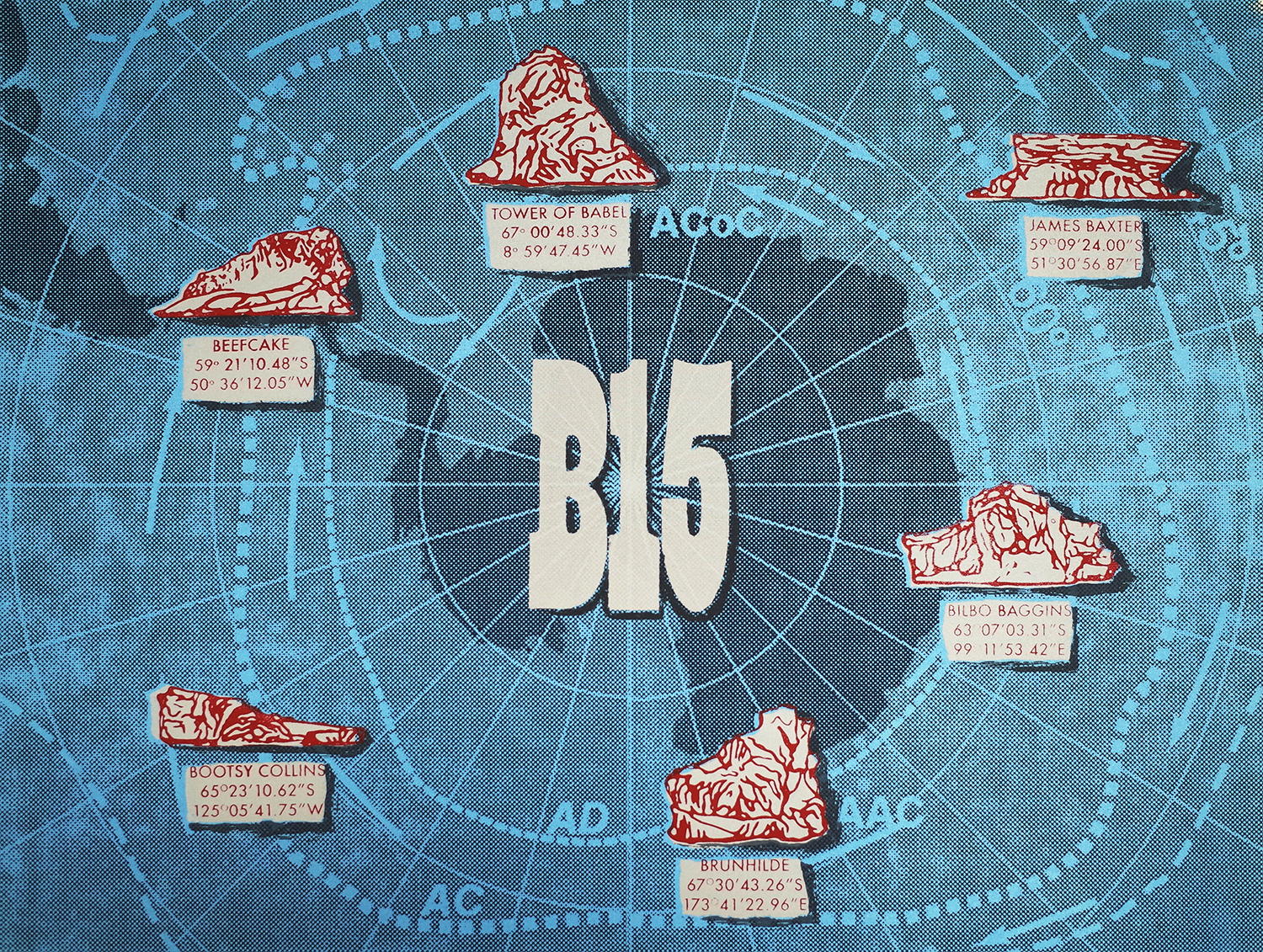
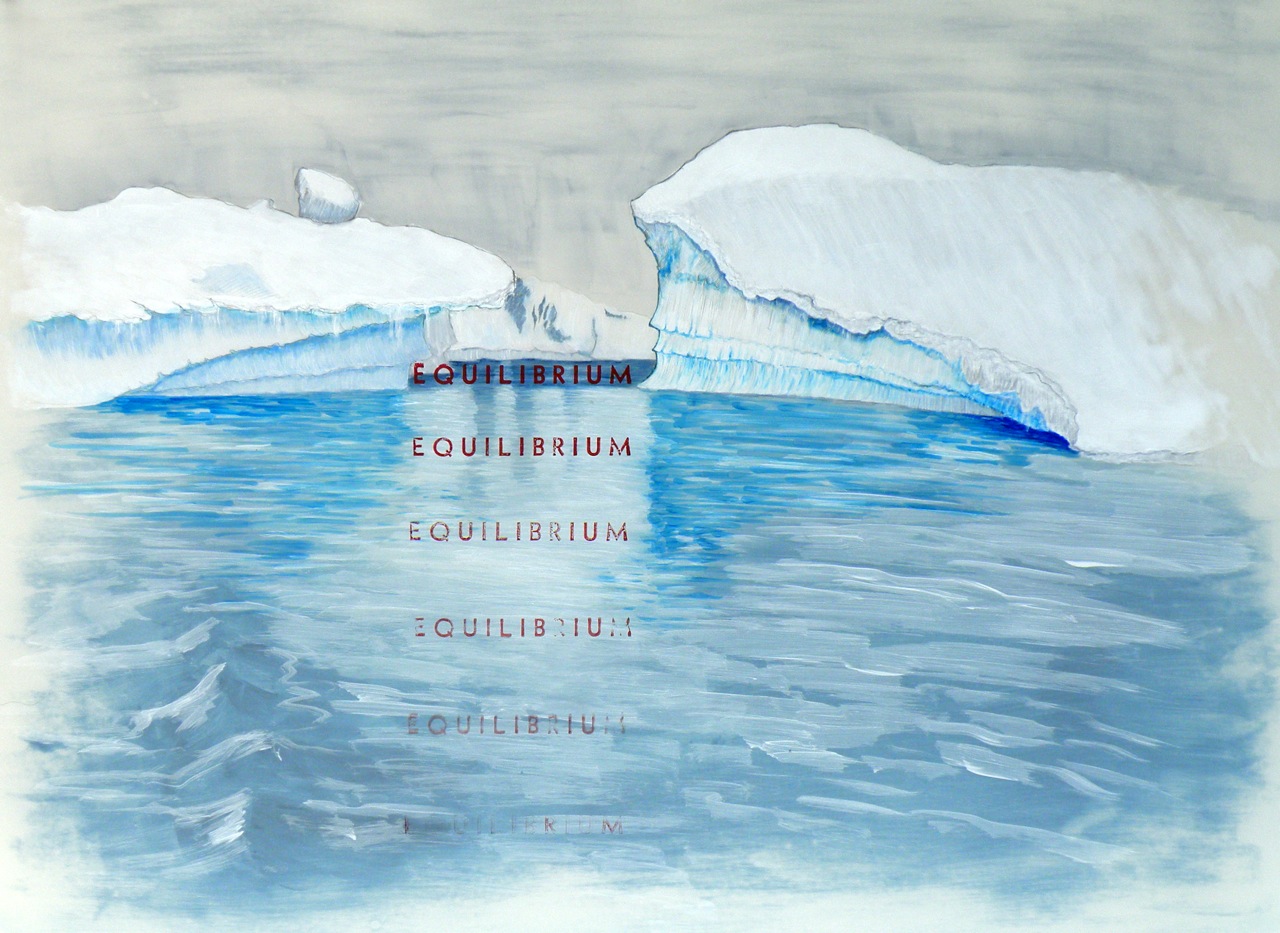

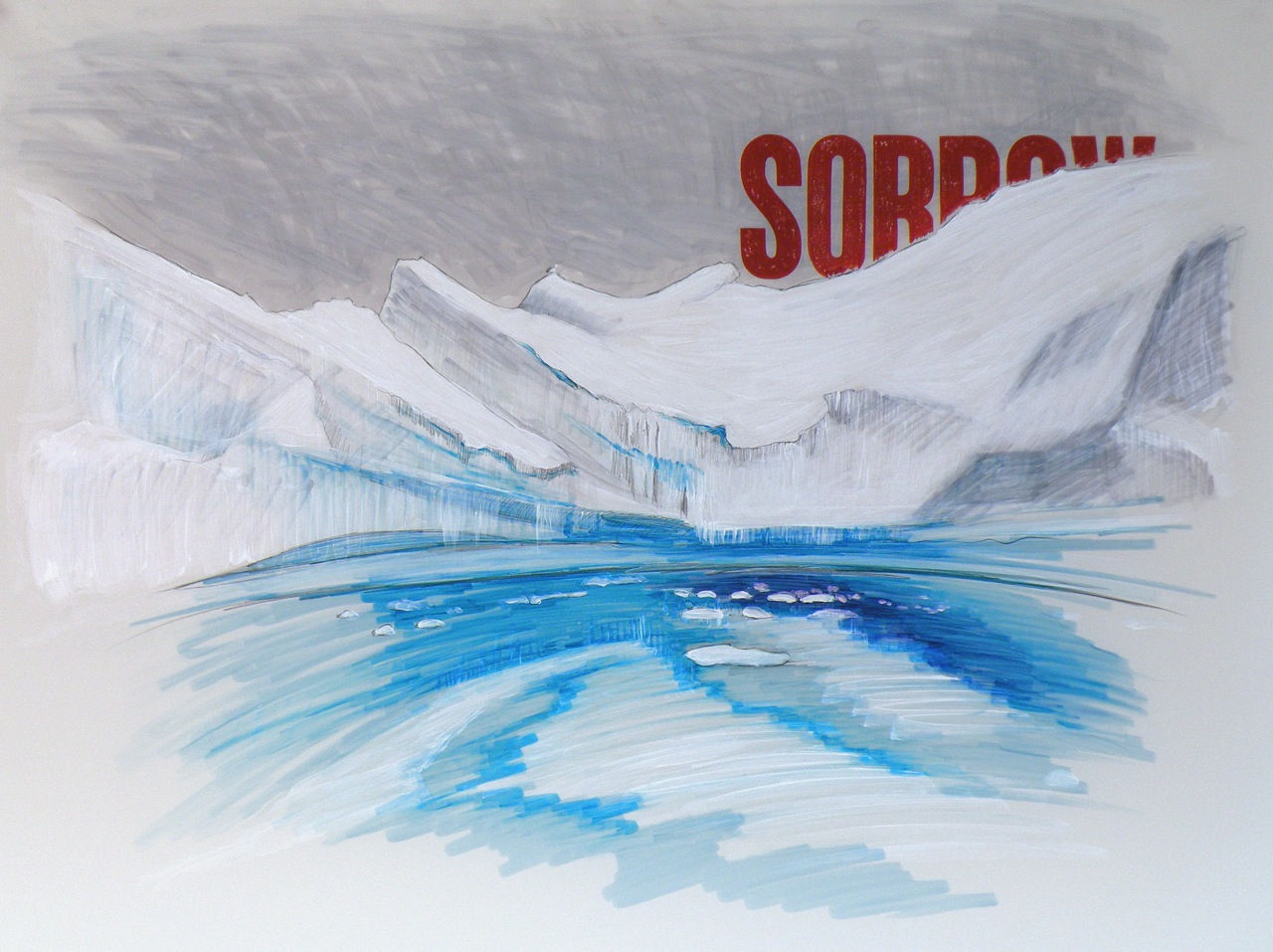


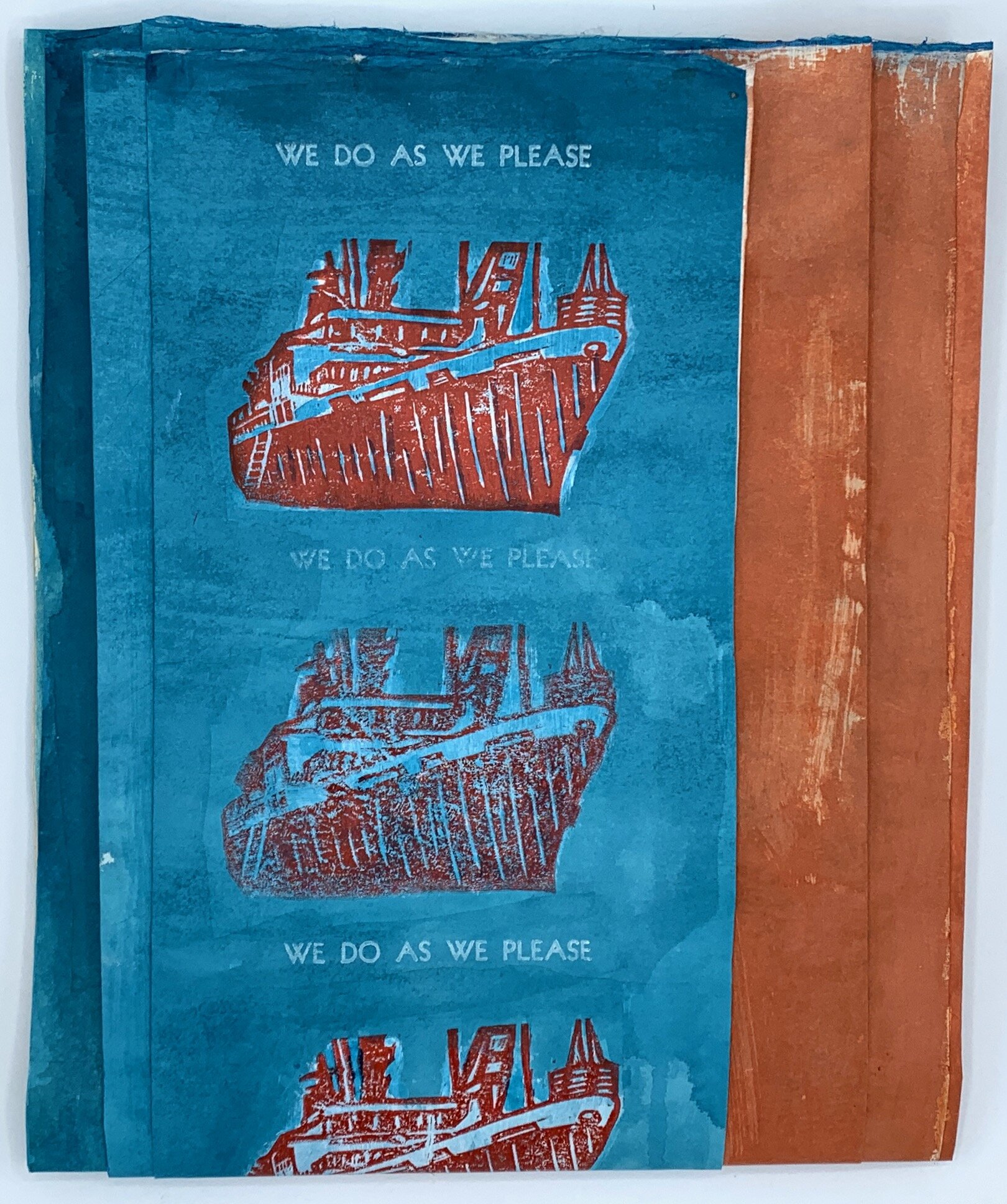

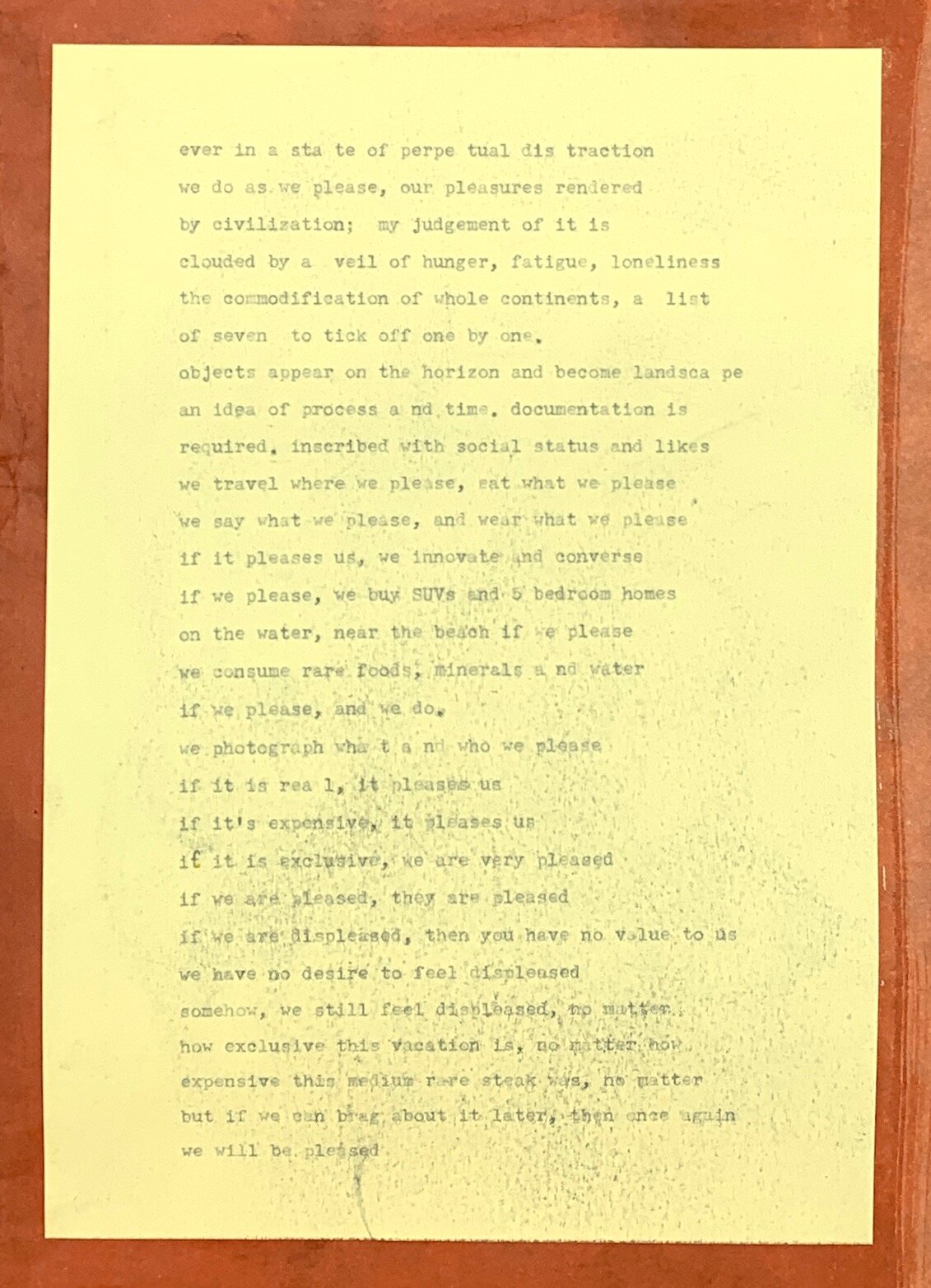
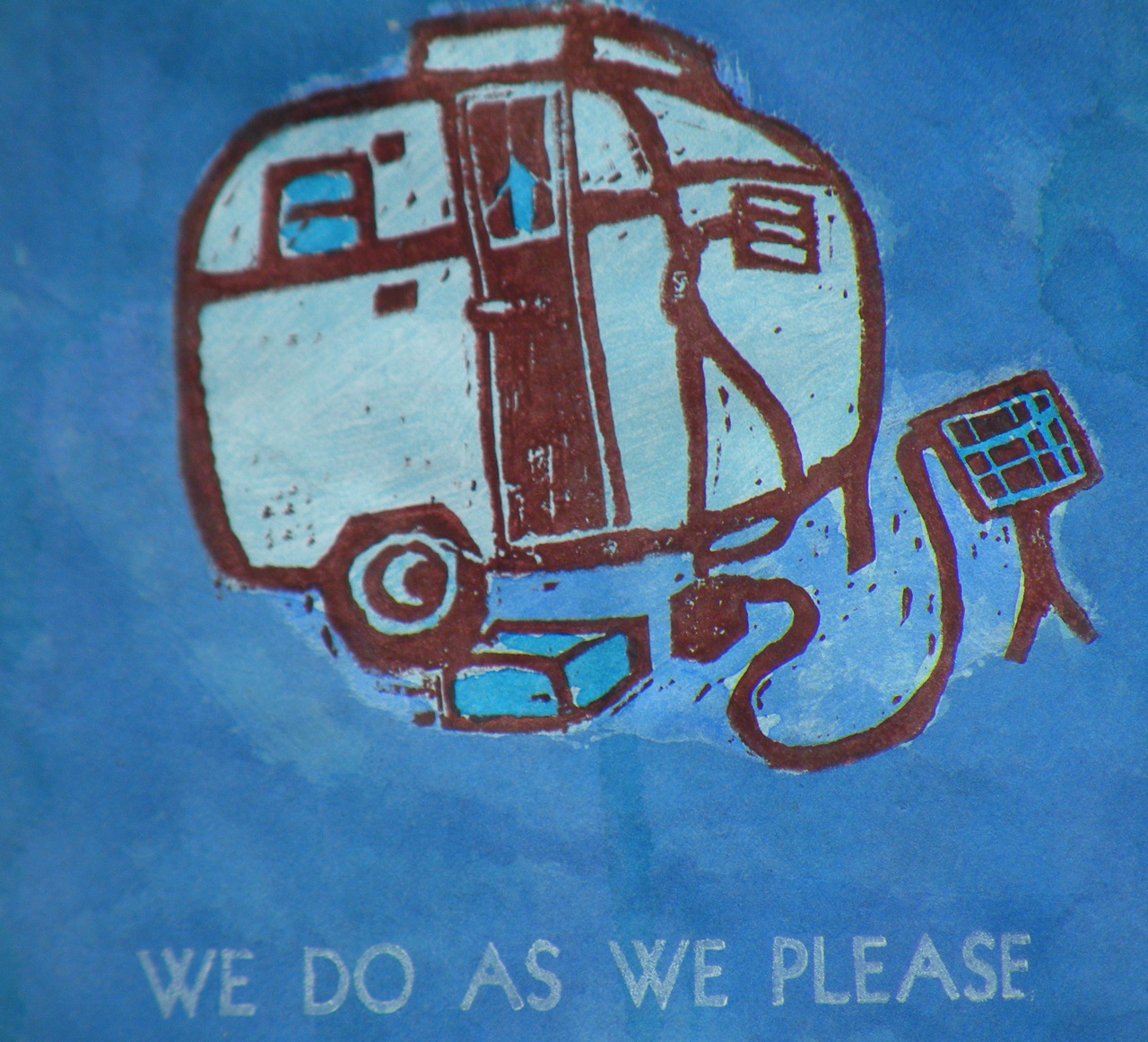



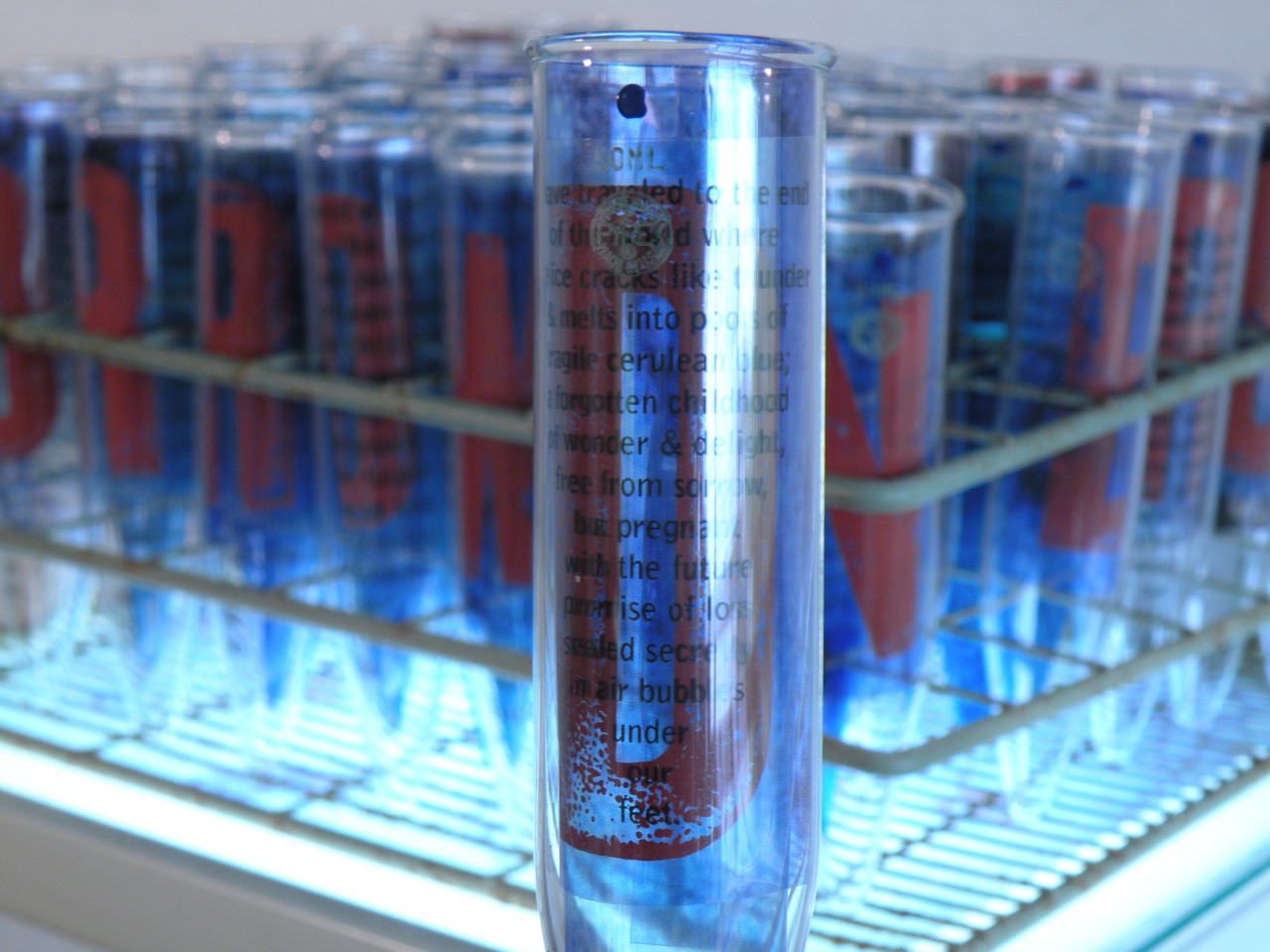
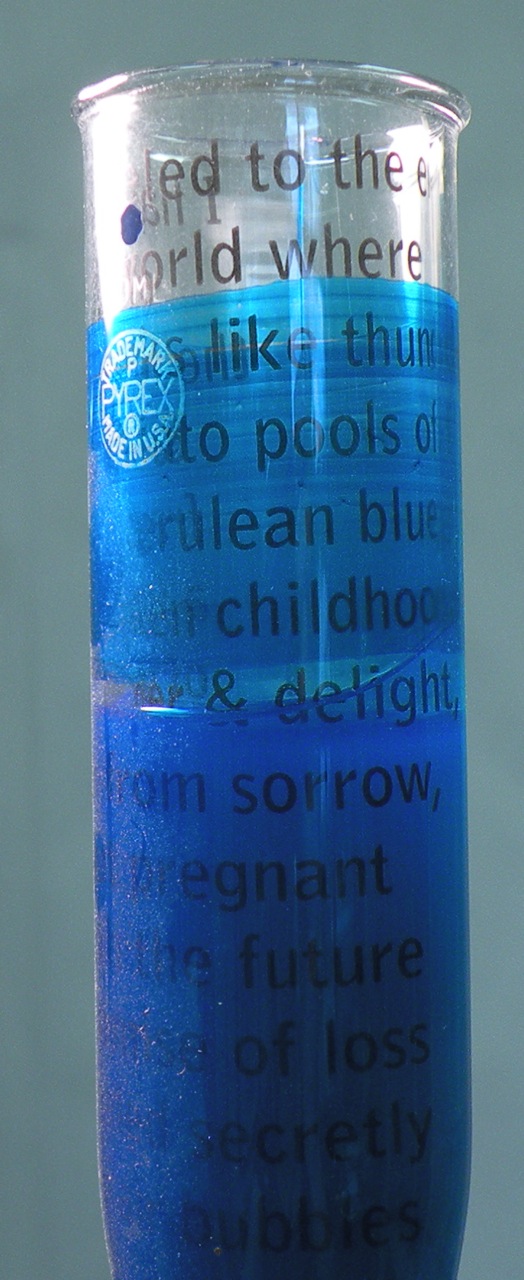
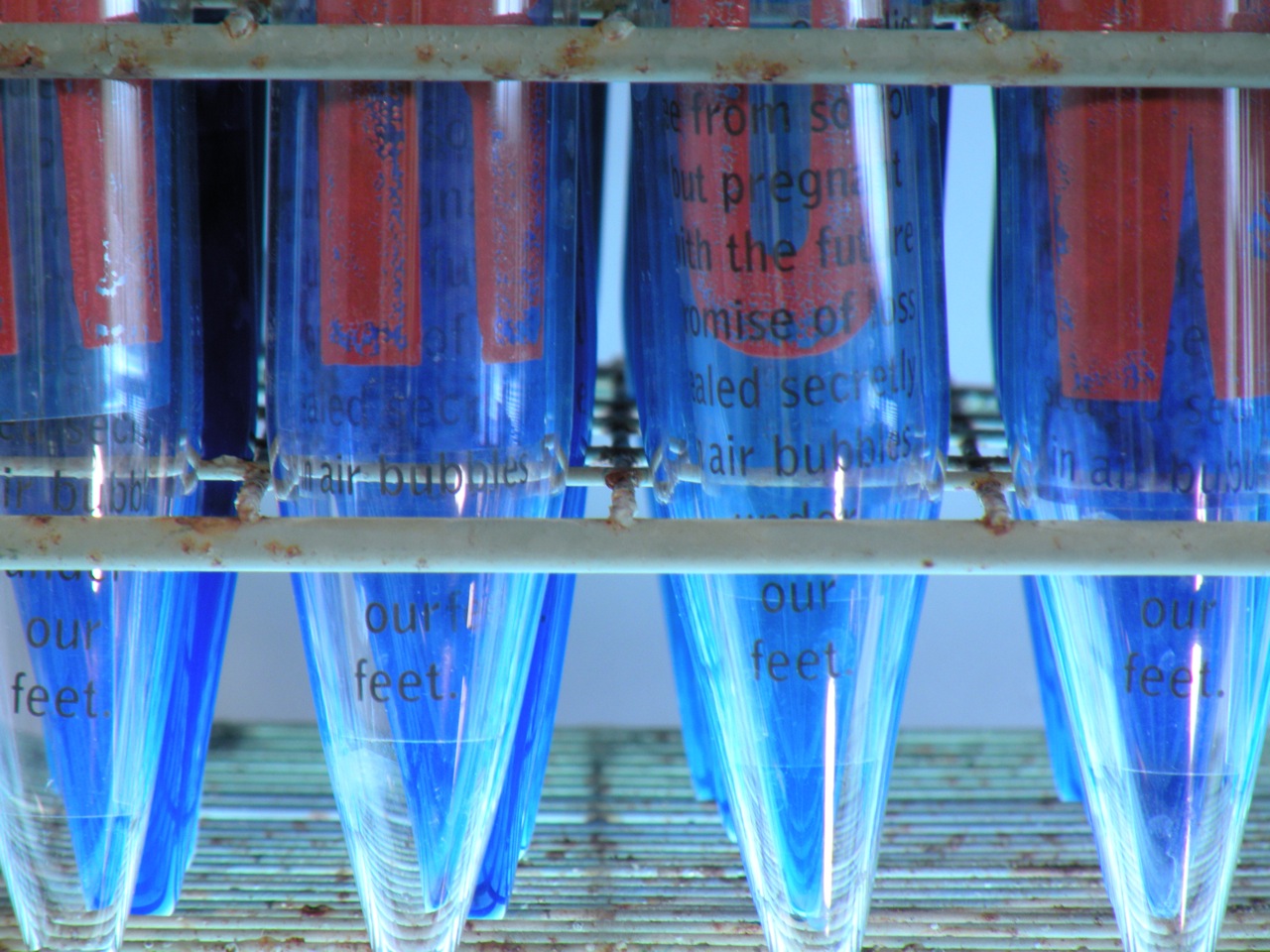

A sequence of 20 letterpress prints on polymer paper dusted with iridescent powder, each print is 12” x 18” Installation view from the Rollins Museum of Art.
This series was made in response to my first visit to Antarctica in 2008 and my research into the fascinating nomenclature describing sea ice in all its various forms and stages.

Screen print on paper, edition of 13
After my travels in 2008 and 2009 to shores of the Antarctic Peninsula, I focused on two specific issues in my work: the costs and benefits of ecotourism and the effects of climate change on the polar landscape. As educational as ecotourism can be, it is also playing a role in accelerating climate change and the deterioration of the some of the most fragile environments on earth. As I depend on periodic long-distance travel and ecotourism to make my work, I am very conscious of the environmental costs associated with it and this awareness has taken root in my art, often through the integration of text and image.

Unique artist’s book on Okawara and carbon papers with acrylic ink letterpress, relief and typewriter. Addresses the inherent tensions in polar ecotourism based on two consecutive trips to the Antarctic Peninsula.

Test tubes, test tube rack, light box, mylar, relief prints, water, ink and poem, 2009
Tracking B15, 2019, artist’s book on graphing vellum, paper and mylar with brass brads, letterpress, screen & digital printing 12” x 6” x 4” Open, 9" x 6" x .75” Closed, Edition of 10
In 2000, the biggest iceberg even recorded, dubbed B15, broke away from the Ross Ice Shelf in Antarctica. The size of Connecticut, this mega-berg emerged at at time when we still called climate change global warming. It was an ominous sign of things to come, but it was also a natural wonder that attracted a lot of attention beyond the scientist community. The last remnants of this mighty iceberg finally melted near the equator last year. This book blends real scientific observations with a fictional account which tracks the lifespan of B15 and its “descendants,” the smaller bergs that broke away from the main iceberg during its 6,600 mile journey around the Southern Continent. Through a playful tone, excerpts from this character’s “journal” revels pet names for the bergs, admiration for these almost wild objects, and a kind of sweet, oblivious obsession with the narrative they are creating. The excitement and joy in the narrative—reflected in the colors I most associate with my travels to Antarctica, marine blues and the easily-sighted bright red of the outpost buildings— is also a meditation on the sublime. The way the character both fears and embraces the existence of B15 as a symptom of climate change is another way of understanding the nuances of our broader relationship with nature. The interactive nature of the book’s mechanics—the central wheel that spins, the three page notebook and fold out map— encourages readers to engage with the book as an active learning tool.
